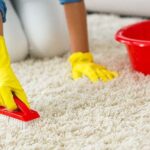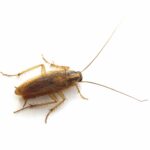How to Write the Methodology Section in a Scientific Article?
The methodology section in a scientific article is relatively more comfortable to write compared to other sections (Abstract, Introduction, Results, Discussion, and Conclusion) because it doesn’t involve adding personal interpretations.
Considered the initial segment to tackle when embarking on your scientific article, the methodology section allows you to start by detailing the materials, methods, and analyses used in your study.
Due to its utility for other researchers, the methodology section holds paramount importance. In this section, the application of specific techniques and methods in your study is explained, along with the rationale behind your choices. You can also provide information in this section that assesses the validity of your study.
It is crucial to provide a clear and precise definition of how your study was conducted and why specific experimental procedures were chosen. When defining and explaining the chosen methods for your scientific article, it is vital to relate them to your research questions and/or hypotheses. The definition of the methods should contain enough detail to enable other researchers to replicate or, at the very least, develop similar procedures in comparable circumstances.
In the methodology section of a scientific article, generally, you should detail:
- Materials used in the study
- Preparation of materials for the study
- Research protocol
- How measurements were conducted
- Calculations performed
- Statistical tests used for data analysis
The preparations, measurements, and protocol of the study should be arranged in a sequential manner for clarity. If more clarity is required, information can be presented under subheadings based on the subject matter.
Content and Writing Style for the Methodology Section in a Scientific Article:
Generally, the methodology section in a scientific article consists of two parts: “Materials” and “Methods.” If necessary, materials can be included within the method section. The sentences in this section are typically constructed in the passive voice.
“Materials” refer to everything examined and instruments used in various processes throughout the study.
“Methods” describe how measurements and calculations were performed and how data was analyzed.
Providing these sections haphazardly can lead to complexity and ambiguities, so careful attention should be given to the explanations listed above.
However, providing excessive details can be overwhelming. In some cases, it might be inevitable to provide certain details. In such instances, presenting them as Supplementary Information would be more suitable for the flow of the article.
If details are to be provided, each method should be presented under separate headings for better understanding.
If the study involves human or animal subjects, there should be a statement confirming that the study protocol adheres to ethical principles. Without such approval, no research project can be carried out, and the study cannot be published in reputable peer-reviewed scientific journals.
In the Methods section, it should be explained which variables were measured, how materials were used, and how these measurements were conducted. Information such as the supplier’s name, country, description of measurement devices, manufacturer and/or model, calibration procedures, and how the measurements were conducted should be provided if necessary.
Justifying why and how specific variables were measured may also be necessary. If there are calculations or statistical analysis methods used in the study, these should be provided after the measurements.
To delve a bit more into the content of the methodology section in a scientific article:
- Specific technical specifications, quantities, and preparation sources or methods
- Description of equipment used and, if necessary, images/figures
- Answers to reader questions such as “How” and “How much” in a way that leaves no room for doubt
- Tables for easier comprehension and comparison if a large amount of data is used
In addition to all this, there are some points to avoid, including:
- Including results in the methodology section
- Adding excessive details for repeatability or validity
- Referring unnecessarily to commercial products
- Referring to patented products or processes not usable by the reader
When preparing your scientific article, carefully reviewing the Author Guidelines of the journal you plan to submit to will reduce the likelihood of your scientific article being rejected.










